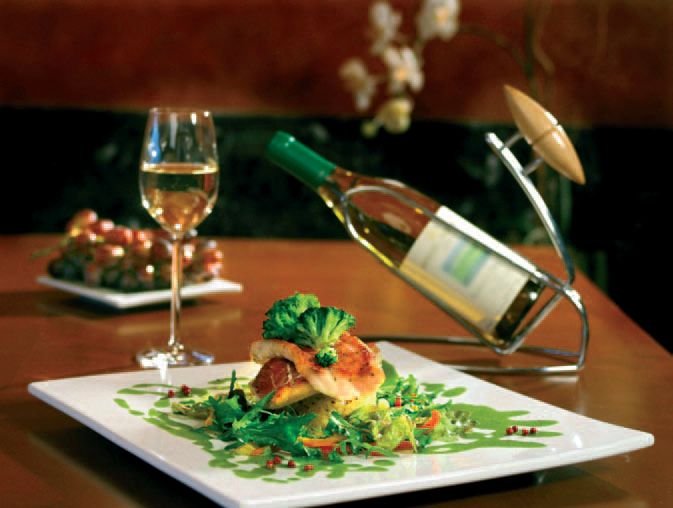
A good wine, served alongside a delicious meal, will always delight and please the tasers of the mees.
Experienced tasters, when assessing a wine, are obliged to ask these two questions: "Would I also like to drink the second glass of this wine?", "Would I like to drink this wine at the table?"
Any somalier will always say that wine has been made to serve at the table, in combination with food, and a successful association consists in achieving a balance between these two components. Moreover, food must be enticing to highlight the characteristics of the wine.
Very important is how we associate the wine with a specific culinary preparation, so we have to do it right! Therefore, I offer you some tips and tricks in this regard:
• If we know very well the characteristics of the wine we are going to drink, we can modify the recipe of the dish, the sauce, the spices or other ingredients so that it fits better with the wine.
• When dining at a restaurant, we will first order the wine and then the food.
• There are a few basic criteria that help us associate wine with food, and these should take into account the 5 tastes that our taste buds can distinguish: sour, sweet, bitter, spicy and salty. For example, sugar from a dessert that is to be served alongside a dry wine will make the wine appear bitter, and a sour meal, served with a not very acidy wine, will make it seem flat, devoid of acidity.
• The most delicate wines are white, fresh, coming from cold climates, and the heaviest red wines come from hot climates.
Low Corpolen: Pinot Blanc, Riesling, Chablis, Sauvignon Blanc.
Medium corn: Viogner and Chardonnay, Pinot noir, Novac, Feteasca neagra, Tempranillo.
Big corns: Merlot, Cabernet Sauvignon, Shiraz and liqueur wines.
• Culinary preparations are also classified in light or heavier, depending on the ingredients and the preparation method. Thus, the lightest ones are steamed or cooked, and the heaviest in the oven or grill.
• It is preferable to blend a sweet wine with a sweet food and acidic wine with a more acidic food.
• An oil-cooked slice will highlight the texture and complexity of a Chardonnay Barique. Also, to help associate wine with food, we can add some spices that will reflect the aroma of wine: a rosemary brandy added to a rabbit stew served with a wine from Languedoc will increase the aromatic intensity of the ensemble.
• In modern cuisine, the classic is replaced by contrast: fatty acid or salt-sweet. For example, an oily fish such as a skewer in the pan may be associated with a white wine, Sauvignon Blanc, that cuts the fat feeling.
• Classical associations: Chablis oysters, Pasta with red sauce with Chianti, Paella with wine from Rioja, Boeuf bourguignon and coq come with red wine from Bourgogne.
• The French prefer to combine Fat Foie with a liqueur wine, more acidic than the one in Jurancon. If you want to serve foie gras, go well with a more fruity red wine and velvety texture, such as Merlot.
• Attention to sauces and spices when cooking, as they can radically change the taste of the food and the wine scraping.
Salads, asparagus, artichoke or tomato can make it harder.
So everything is better learned through practice and, of course, mistakes, so do not hesitate to commit them. Try to understand the characteristics of the wines and how they interact. Give yourself the pleasure of quitting and trying something different, experimenting and so the desired results will not be delayed.
Awesome post!! There aren't many things better than a perfectly paired dinner! Cheers from @steempub-trail!
Cheers ! :) Thank you !
great thoughts on wine pairings, although I do have to point out the misspelling of the word Sommelier.... :) You should look at the #steempub tag, there are lots of great wine and alcohol related posts there. Cheers from Texas!
Thanks for correction ! :)
It's only because I am in the wine business, I promise I am not a spelling troll... LOL!